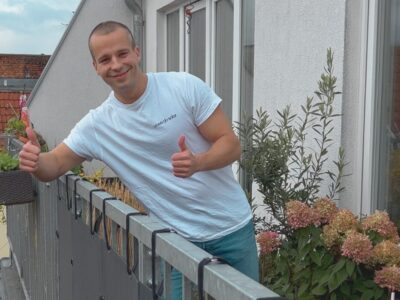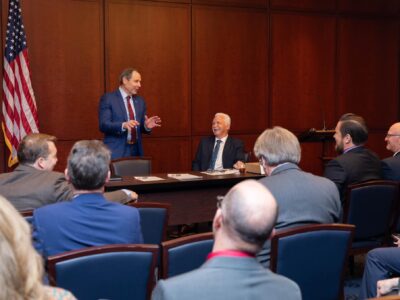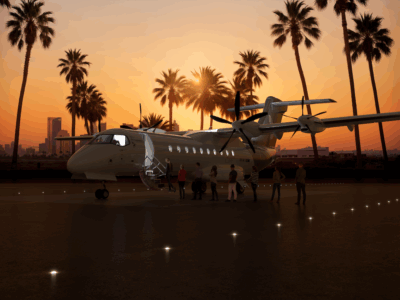Stanley J. Marshall Center has served as a main center for South Dakota State University’s (SDSU) athletics since opening in 1973. The Center’s multiple functions include housing most of the athletic department’s offices, containing the university’s swimming pool, and incorporating the First Bank & Trust Arena, home to wrestling matches and basketball and volleyball games. The SDSU Jackrabbits have developed a powerful Division 1 athletic program, winning conference titles in eight sports over the past decade.
This success has led to the Jackrabbits outgrowing their facilities. In the late 2010s, the university launched a multi-phase plan to renovate several sports venues. The first step focused on remedying the lack of adequate training space for the basketball and volleyball teams by building an addition to the Marshall Center that included practice courts for those teams. The design was not only concerned with making things better for the athletes but also for the environment.

The Marshall Addition project was one of the first in South Dakota to be constructed to earn Leadership in Energy and Environmental Design (LEED) Silver certification, per the state’s then-recently enacted LEED requirements for new buildings.
Several measures were implemented to enhance the building’s sustainability efforts. The exterior features a continuously insulated shell created through a combination of foam insulation, precast sandwich panels, and rigid insulation above the deck. The use of insulated fiberglass sandwich panel windows also serves to improve insulation.
Strong insulation is essential in South Dakota, particularly in the winter. A 2022 ranking placed South Dakota as the state with the fourth most miserable winter — North Dakota came in first.
The window insulation decreases the amount of heat or cold air that might seep inside the building and prevent glare.
The building also contains an innovative solar wall heating system that optimizes energy conservation during cold and hot weather. Dark-colored, perforated metal panels cover the top of the exterior walls; however, there is an air space between the panels and the walls.
During cold weather, the outside air is drawn through the panels’ perforations and then is warmed up by the solar panels in the continuous air space. The warmed air is pulled into handling units that heat the building. This process lowers the amount of heat the center needs to operate. Conversely, in warmer times, hot air exits through the solar wall while fresh intake air is pulled down from the roof to improve circulation inside the venue.
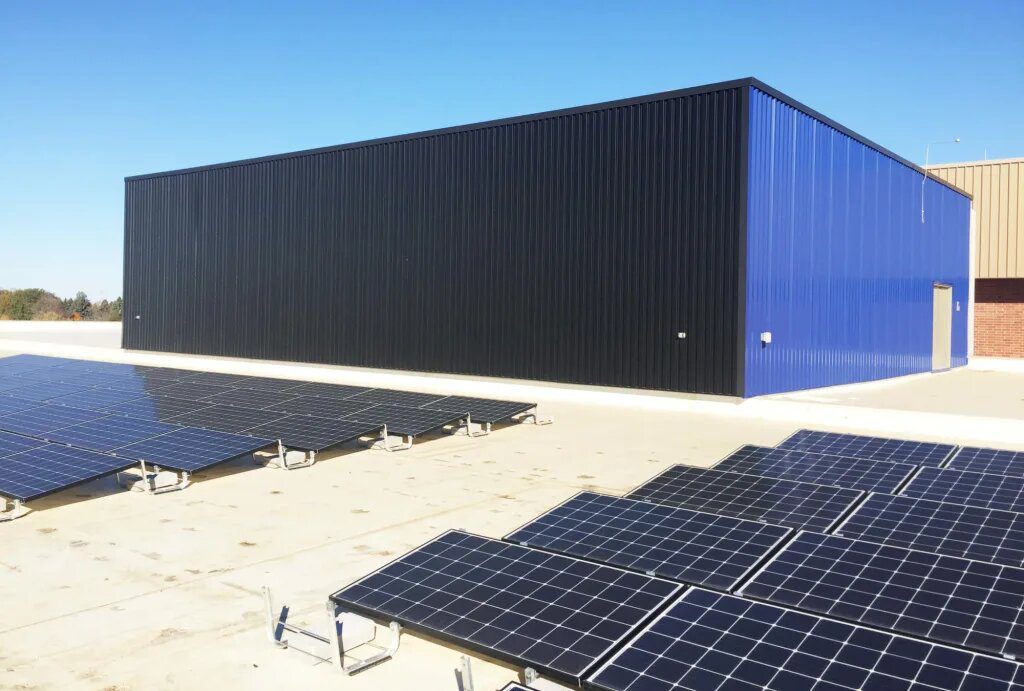
The roof has also been equipped with other green-achieving elements. A 50 kW photovoltaic array generates solar energy for the Center. Additionally, the roof was coated with a white membrane, which reflects the sun’s rays and consequently reduces the building’s energy needs. This “white coat” helps in two ways: cutting down on global warming and saving on operating expenses.
The center’s sustainable design produced other benefits for the university. SDSU achieved a Silver LEED certification, obtaining this honor in 2020.
It is undoubtedly no coincidence that 2020 was also the year that the school received a Sustainability Tracking, Assessment, and Rating System (STARS) Silver ranking. These honors are awarded by the Association for the Advancement of Sustainability in Higher Education (ASHE) for environmental excellence.
“A key takeaway from the [STARS] report is how broad and encompassing sustainability is. It shows how sustainability truly goes beyond just recycling,” stated Jennifer McLaughlin, SDSU’s sustainability specialist. “Efforts from all across campus, whether in academics, policymaking, operations, or student engagement, all are important for creating a sustainability culture.”
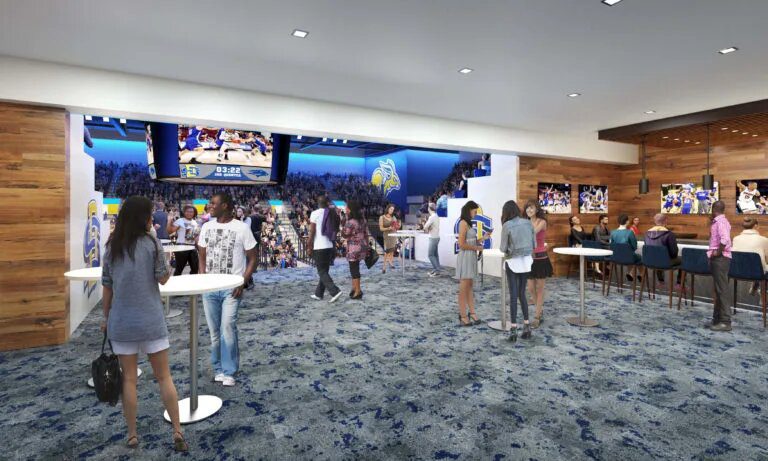
SDSU is no newcomer to marshaling an environmental mission. In 1999, the university’s facilities and services department hired its first-ever energy conservation engineer. The school has also been a Tree Campus USA member since 2009 and a Bee Campus USA member since 2018.
The Stanley J. Marshall Center addition represents one of 14 LEED Silver buildings at SDSU. The school also has three LEED Gold certifications, including one for the Dykhouse Athletic Center, home to the Jackrabbits’ football operations.
Sustainability has continued to play a significant role in the athletic department’s multistage renovation project. As part of upgrading the First Bank & Trust Arena, for example, approximately 60% of the wood bleachers are being recycled to be used as accent pieces around the interior of the extensively overhauled arena.


